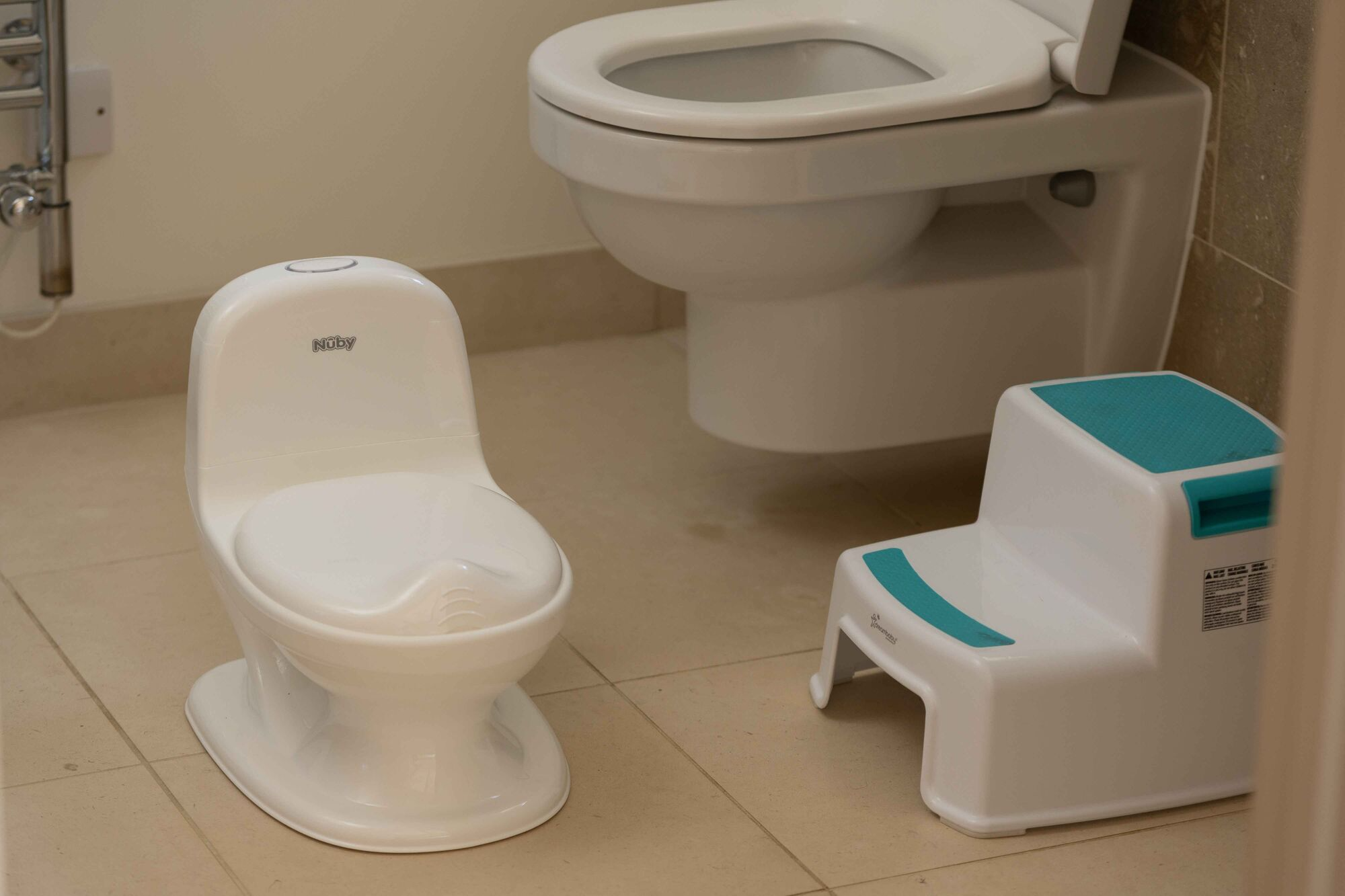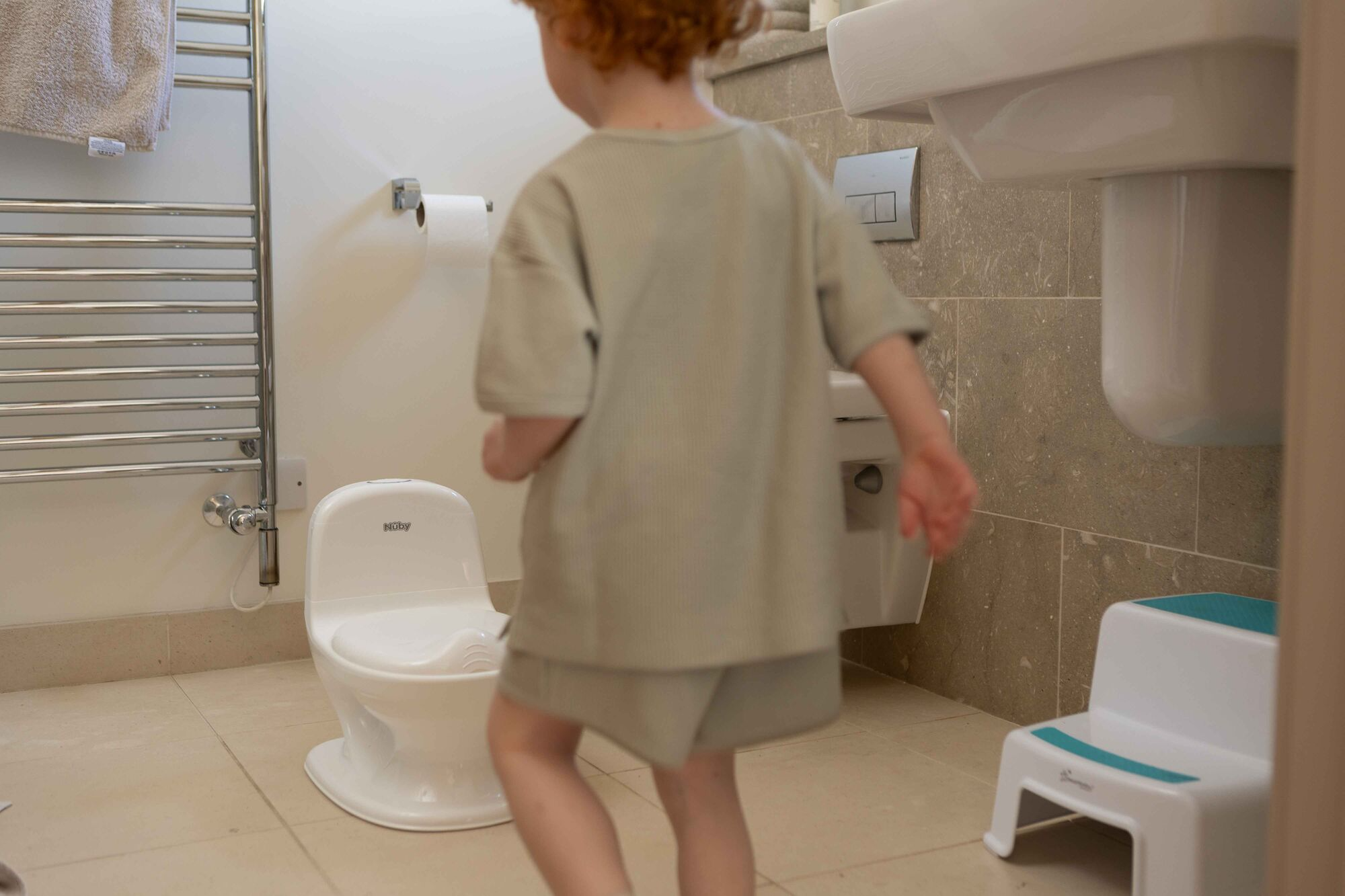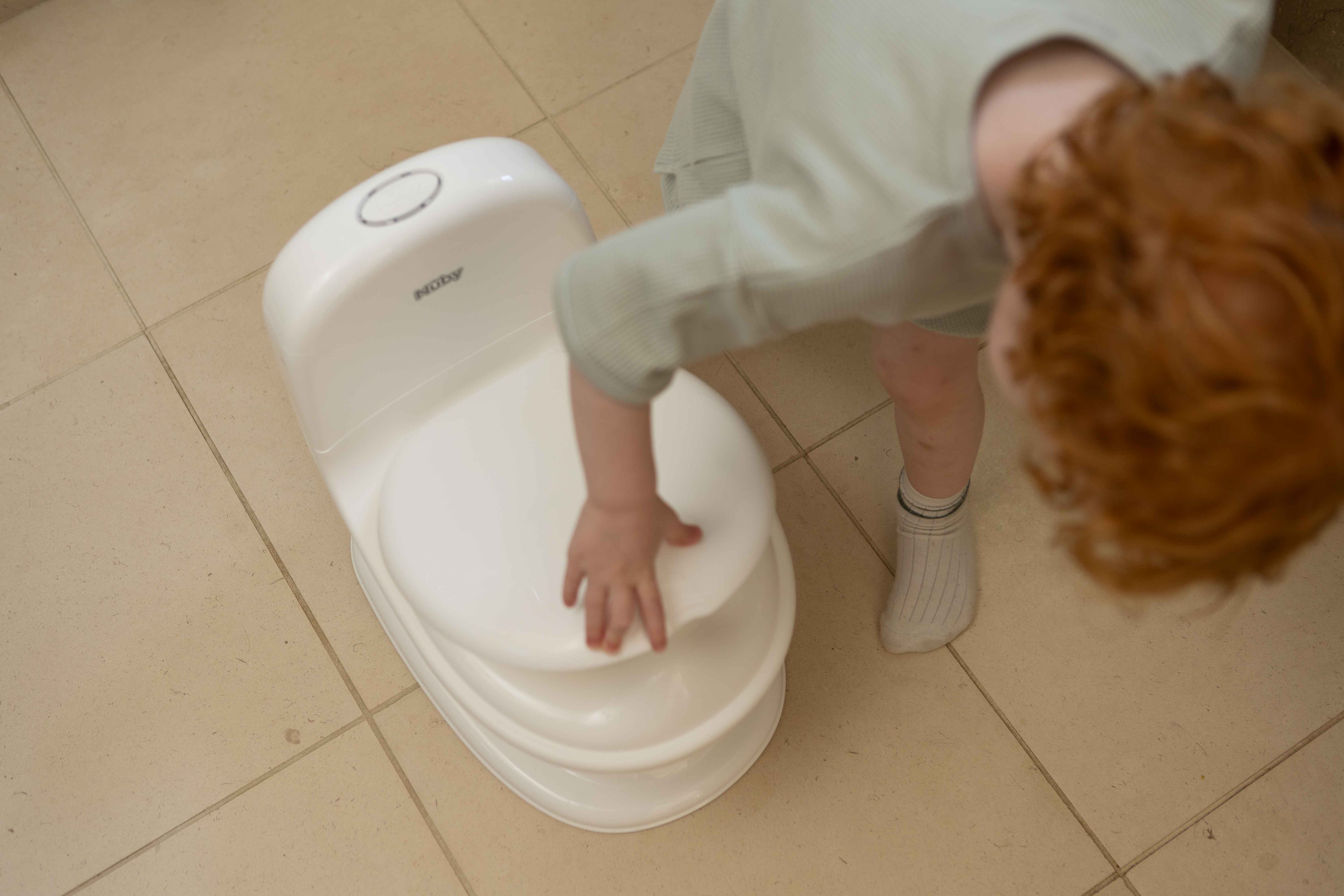Potty training is a big learning curve and not just for toddlers, but for parents too. When the time comes, it can feel a bit like stepping into the unknown. That’s why we’ve pulled together this handy guide, answering some of your most asked questions and giving you tips on how to get started.
When to start potty training

The question on every parent’s mind is when to start potty training? The thing is, no two children are the same. Some may be ready at 18 months, others closer to three. If your child isn’t ready yet, trying to push it won’t work and will probably just end in frustration for both of you.
Look out for these four signs that your child might be ready:
1. Their nappies are staying dry for longer periods of time.
2. They understand when they’ve done a wee or poo and want their nappy changed.
3. They tell you when they’re going or even before it happens.
4. They get fidgety or go off somewhere quiet to do their business.
If you’re ticking off a few of these, great news your toddler is probably ready to start and the whole experience will be a lot more straightforward when they already understand what’s going on.
How to prepare your child for potty training

Before you go all in, it’s a good idea to gently ease your child into the concept of potty training. A slow and steady approach can help it feel a lot less overwhelming when the big day comes.
Here are three simple ways to prepare your child:
1. Introduce a potty into the home
Pop a potty in your bathroom or playroom before you start so it becomes part of the scenery. Your child might naturally get curious about it and that’s your chance to explain what it’s for and maybe even get them to practise sitting down on it and standing up.
2. Talk about nappy changes
Use nappy time to chat about what’s going on. Talk about wees and poos in simple, friendly terms so they start to connect the dots.
3. Change nappies in the bathroom
If you’ve been doing nappy changes in the bedroom or living room, start switching things up and use the bathroom instead. It helps your child link the bathroom with going to the toilet and where better to learn?
Potty training essentials

Here’s your go-to list of essentials to make the journey smoother:
- A potty (or two…) – One for upstairs, one for downstairs makes life easier and helps avoid last minute accidents. We’d recommend our My Real Mini Toilet Potty which looks and feels just like an adult toilet, it even has a realistic flushing sound. Another option is our Easy Clean Potty which is designed to help children transition to a real toilet when they are ready.
- Travel potty – Essential for days out. Potty training at home but not while you’re out and about = confusing for toddlers. For this we’d recommend our Go Potty which is a 2 in 1 travel potty and potty training seat. We also have a Gotta Go Travel Urinal with an integrated funnel and leak proof design.
- Potty training underwear – These are great for the in between phase. They’re more absorbent than normal pants but your child will still feel wet if they have an accident which helps them learn.
- Regular underwear – Some parents prefer to skip the training pants altogether and jump straight to regular underwear.
- Step stool – For toilet access and handwashing practicing. A game changer for little legs.
How to start potty training

Now you’ve got all the gear and your child’s showing the signs, it’s go time. But how do you actually do potty training? Well, there’s more than one way and no way is right or wrong. It’s all about finding the approach that fits your child (and your sanity…) best.
Here are four popular methods:
1. The 3 day potty training method
This one’s all in. You dedicate three full days to potty training, with no distractions and no plans. Just you, your child and the potty. You ditch the nappies and stay super close, watching for cues and guiding them to the potty quickly. It’s intense but it can be super effective if you’re both ready and you’ve got three days to spare.
2. ‘Oh Crap!’ potty training
Based on the bestselling book Oh Crap! Potty Training by Jamie Glowacki, this method takes a step by step approach. You start with your child going bare bottomed at home, so they begin to recognise when they need to go. There’s a big emphasis on watching for their signals and keeping things low pressure.
3. Scheduled potty sitting
This method is all about building a routine, it involves getting your child to sit on the potty at set times, say every 30 minutes and after meals or naps. It’s handy for toddlers who aren’t yet aware of the urge to go and helps create consistency. Just keep it upbeat and celebrate effort, not just results.
4. Child-led potty training
This is the most relaxed method of the four. You wait until your child shows a genuine interest and let them set the pace. Some days they’ll be keen to use the potty and other days not so much. You can gently encourage them by talking about potty training, reading books on the topic or involving them in choosing their own potty or underwear. It might take a little longer but it can feel more natural for everyone.
Is your toddler ready to start potty training? Well, you’re in the right place as we have lots of potty training essentials. Including our My Real Mini Toilet Potty and our travel Go Potty, browse our full potty training collection.
